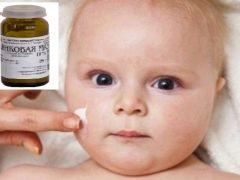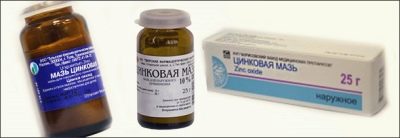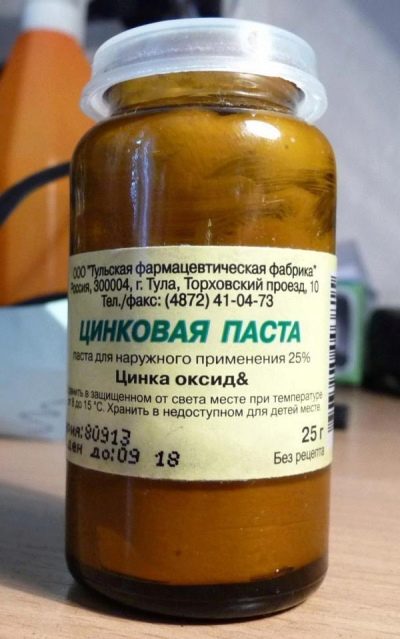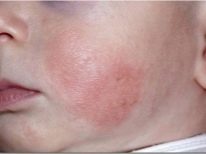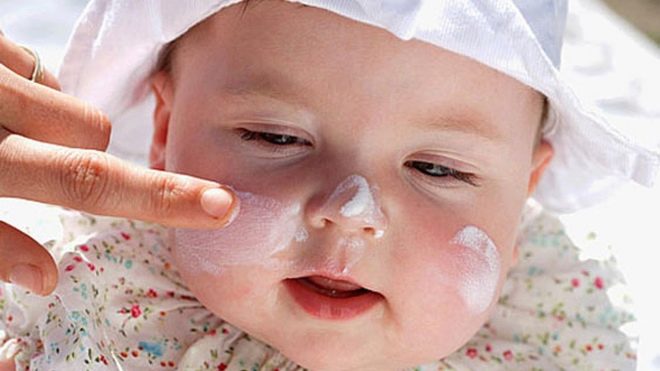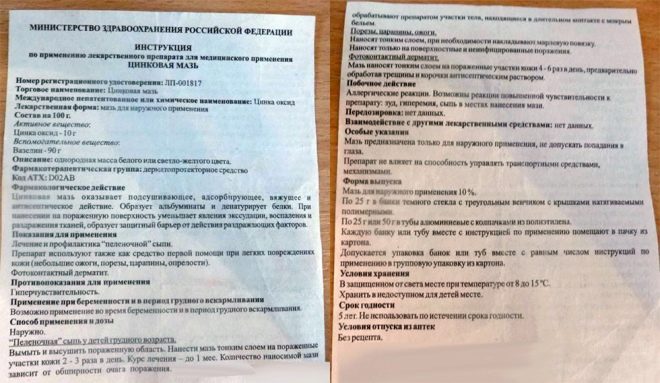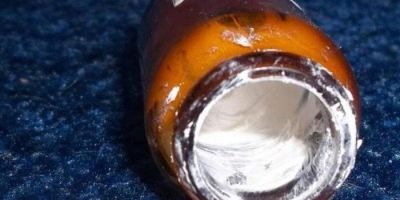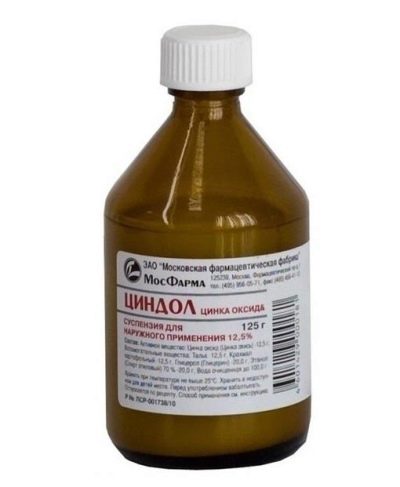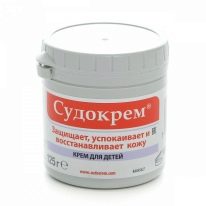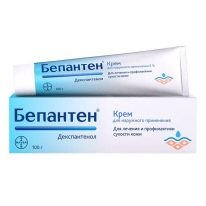The use of zinc ointments and pastes in the treatment of children
Preparations based on zinc oxide are very popular in the practice of dermatologists. Many domestic pharmaceutical companies offer low-priced products with such an active substance. One of these drugs is called "Zinc Ointment," the other is "Zinc Paste." Both drugs are used for external treatment for the same diseases, but have some differences.
Release form
"Zinc ointment" is sold in glass jars, plastic bottles or tubes of 25, 30, 50 or 100 grams in one package. This medicine is a thick soft mass. It is uniform, light yellow or white. The ointment is easily applied to the skin and can penetrate its thickness, which will help with chronic inflammatory processes.
“Zinc paste” is also presented in pharmacies in tubes and cans, and one package contains 25, 30 or 40 grams of the drug. Such a drug is thicker due to the presence in the composition of powder components, which not only affects the consistency, but also slows down the absorption of the active substance into the skin. For this reason, the paste is used more often in acute processes, when the permeability of blood vessels and the epidermis is increased, as well as in situations where the skin needs to be dried.
Composition
The main ingredient of both drugs is zinc oxide, but its concentration is different. In the ointment its only 10%, that is, each gram of such a medicine contains 100 mg of zinc oxide. The concentration in the paste is higher and amounts to 25%, which corresponds to the amount of 25 g per 100 grams of this medication. The auxiliary ingredient of the ointment is vaseline, which contains 90% of the preparation. As for Zinc Paste, it also contains petrolatum, but its content is only 50%, and 25% of this medication is potato starch. Other chemical compounds in these drugs are absent.
Operating principle
The zinc oxide preparations applied to the skin are well dried, due to which weeping and exudation are reduced. This helps eliminate local manifestations of skin irritation and inflammation. In the ointment, a good astringent effect is noted, and the paste, due to the larger volume of powdered components, has adsorbing properties, absorbing toxic products from the affected skin.
Both forms have some disinfecting effect, which is used for bacterial skin infections. It is due to the fact that metal ions negatively affect protein molecules in microbial cells and this causes the death of microorganisms. However, this action is not too pronounced, therefore a strong infectious process "Zinc paste" or "Zinc ointment" can not be eliminated.
Due to the ability to form a protective coating on the treated skin, which provides a petroleum jelly base, such agents are also used to prevent irritation or damage to the skin, for example, in infants during a diaper change, in order to protect the delicate skin of the infant from the effects of particles of natural excretions.
Indications
Both drugs are prescribed for:
- sweatshirt;
- dermatitis, including atopic;
- Diaper rash;
- diaper rash;
- scratches and other superficial wounds;
- exacerbation of eczema;
- streptoderma;
- sores on the skin;
- burns;
- herpes simplex;
- lichen;
- bedsores;
- trophic ulcers.
Drugs are also in demand as prevention of diaper dermatitis or the addition of secondary infection in chickenpox. Ointment or paste treats the skin of the baby when changing diapers or diapers, and with chickenpox, such funds are applied to the bubbles, so that they dry out faster and do not fester after opening.
From what age is prescribed?
Both paste and ointment can be used in children of any age, including newborn babies and infants during the first months of life. Such drugs act only in the place of use, without exerting any harmful effects on the children's body. This also means there is no risk of overdose.
Contraindications
Both drugs can not be used only for hypersensitivity to zinc oxide. Other contraindications for such drugs are absent.
Side effects
Sometimes, after smearing the skin with “Zinc ointment” or “Zinc paste”, there is a reddening or itching. In rare cases, a rash appears on the treated skin, which indicates an allergic reaction to such medicines and requires their cancellation.
Instructions for use
Ointment or paste is applied to the affected skin in the dosage that the doctor prescribes, as it is different and with different indications, and for different dosage forms. Treatment with "Zinc paste" is usually carried out from 2 to 4 times a day, and if the child has a purulent infection, then first the skin should be smeared with an antiseptic. Apply "Zinc ointment" is recommended 2-3 times during the day, but sometimes more frequent treatment is required - 4-6 times a day.
How to use in infants?
“Zinc paste”, like “Zinc ointment,” is often used in infants as a treatment. diaper rash, and for their prevention. Such doctors, many doctors recommend to include in the home first-aid kit while still waiting for babies. The skin of infants has a more delicate surface, which can be damaged when in contact with sweat, feces or urine, for example, if the mother hesitated a little and did not have time to change the diaper in time.
Even with a small amount of redness, the baby will cry, sleep and eat poorly, and if the irritation is strong and eroded on the skin, it can even affect the growth and physical development of the toddler. Preparations with zinc oxide help in such cases, since Cover delicate baby skin with a thin layer and protect from harmful effects.
At the same time, physicians consider Zinc Paste a more preferred option, because it has a stronger drying effect.
Lubricate the skin to paste karapuza twice or thrice a day, when there is a change of the diaper. It is possible to apply medicine both on reddened sites, and on absolutely healthy skin (with the preventive purpose). However, it is undesirable to use such a medicine for too long in order not to provoke a strong drying of the skin, which is also bad for a young child.
If crumbs often have diaper rash, and the skin under the diaper becomes inflamed, you should consult a doctor and determine the cause of this phenomenon. It is provoked by the transition to feeding with a mixture, teething, diaper allergy, the introduction of complementary foods, dysbacteriosis and other factors.
Terms of sale
Both drugs are non-prescription drugs and are sold in almost all pharmacies. Their price is influenced by both the manufacturer and the amount of the drug in the package. For example, a tube with 30 g of "Zinc ointment" costs about 40 rubles, and for 25 g of "Zinc paste" you need to pay an average of 55-70 rubles.
Storage conditions
Both the ointment and the paste should be kept in a cool place at home (the temperature range recommended by most manufacturers is from +8 to +15 degrees, but there is also a recommendation of a temperature not lower than +25 degrees), putting the package so that it is inaccessible to small children. The shelf life of such drugs for most manufacturers is 5 years.
The use of an expired product is unacceptable, as this may lead to the appearance of negative side effects.
Reviews
Almost all reviews of ointments and pastes that contain zinc oxide are positive. Drugs are praised for effective action, affordable price, availability in all pharmacies and the possibility of use in children. According to moms, such drugs quickly help with rashes, skin lesions, redness and other problems, and an allergic reaction is extremely rare. Among the minuses, it is sometimes noted that the texture is too thick and the packaging is uncomfortable.
Analogs
Among the other products based on zinc oxide, which are prescribed by dermatologists, Desitin is very popular. This 40% ointment is in demand for contact dermatitis, burns and various skin injuries. It is also permissible to use it in infancy, for example, in case of diaper rash, sunburn, diathesis or scratching, as well as for the prevention of irritation from diapers.
Another well-known analogue of "Zinc ointment" is a drug called "Zindol". Its difference is the dosage form, represented by a 12.5% suspension. The drug is used for diaper rash, dermatitis, chicken pox and other skin problems. In addition, in case of skin diseases, the doctor may recommend combined medicines, including zinc oxide, and other active ingredients. This may be salicylic-zinc paste, including 2% salicylic acid, due to which the anti-inflammatory effect of "Zinc paste" is further enhanced.
Replace "zinc paste" and other products that contain zinc oxide, and other topical medications used in various inflammation and skin lesions. Among them in childhood the following are often prescribed.
- «Sudokrem». This multi-component medicine can be used from birth. In its composition, benzyl benzoate, lanolin, benzyl cinnamate, and benzyl alcohol were added to zinc oxide. The drug is used to accelerate the healing of the skin and reduce inflammation in wounds, burns, dermatitis, bedsores, and so on.
- «Bepanten». Ointment or cream with the same name acts on the skin due to dexpanthenol. They are prescribed at any age for burns, abrasions, diaper rash, prickly heat, and other problems, as well as for the prevention of skin irritation.
- «Elidel». This 1% cream containing pimecrolimus has a strong anti-inflammatory effect and is approved from the age of three months. It is often prescribed for atopic dermatitis.
For details on the use of zinc ointments and pastes in the treatment of children, see the following video.
